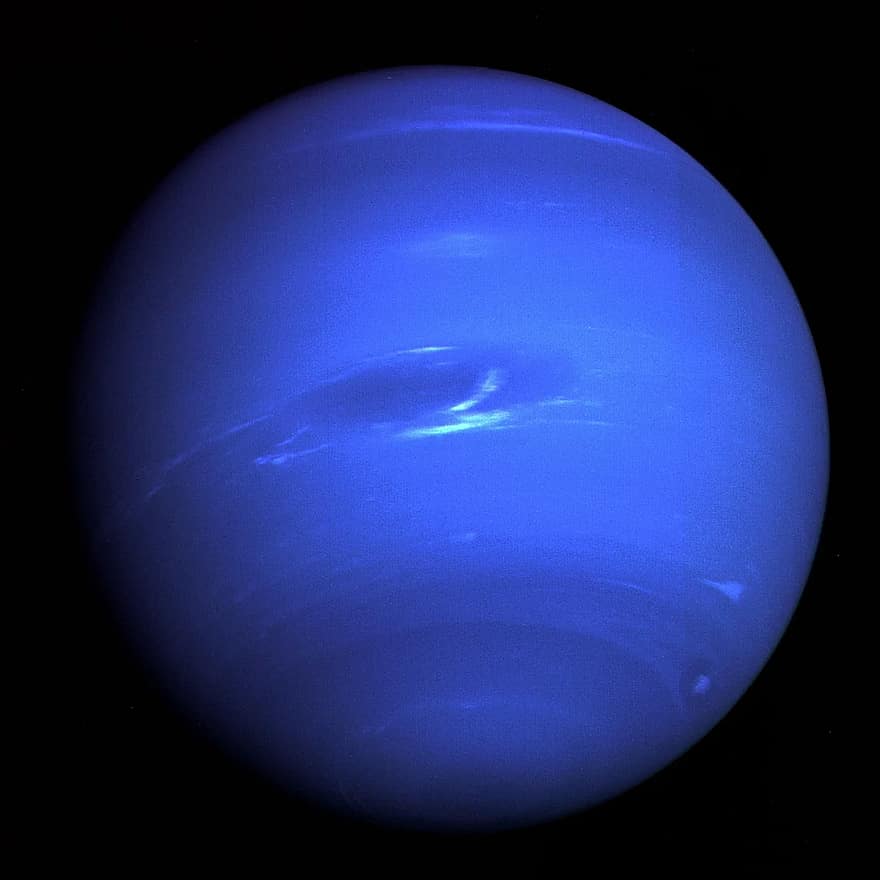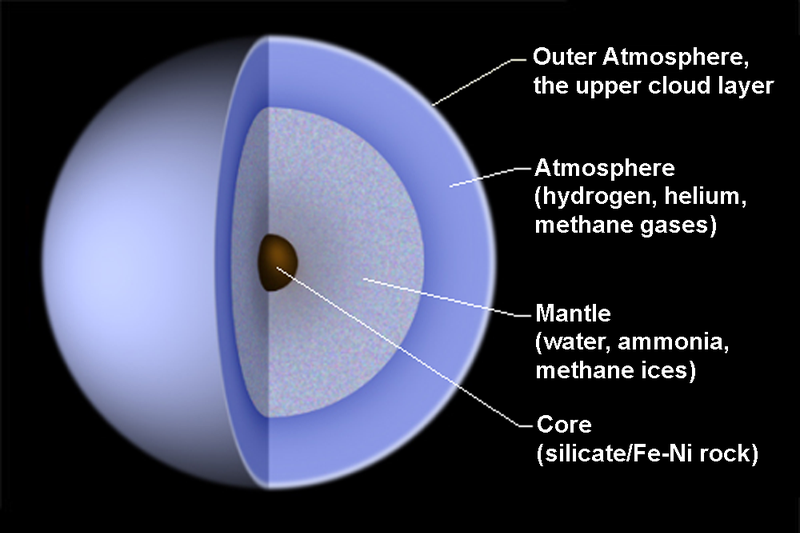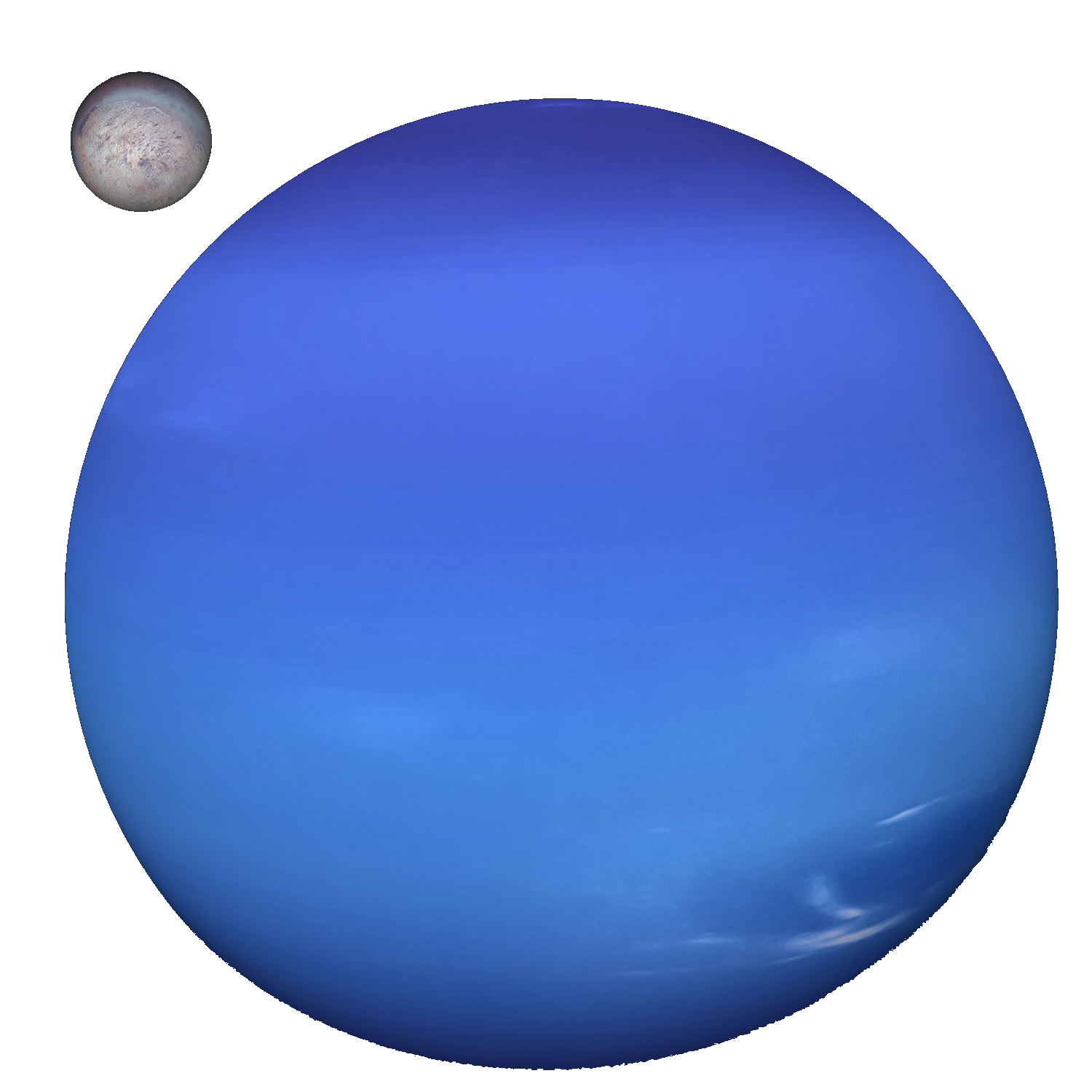
Neptune Planet
This is Neptune, the farthest planet in our solar system. Although it's not as big as the other ice giants, Neptune is the fourth biggest planet in our solar system. The temperatures on this planet can reach a dazzling -353.2 degrees farhenheit. This fact is what makes Neptune the coldest planet in our solar system. That's not all, if you think the temperatures are bad, the winds on this planet are even worse. Neptune's winds can reach supersonic winds that blow up to 1200 miles per hour. This type of wind can easily destroy houses, trees, and pretty much anything on earth.
Neptunes atmosphere is made up of mostly hydrogen and helium, however the blue color that radiates from Neptune comes from the traces of methane in its air. Going deeper inside Neptune, the planet has a water-ammonia ocean that serves as the planets mantle. Scientists estimate that the temperatures inside the mantle can range between 3,140 degrees farhenheit to 8,540 degrees farhenheit.
Neptunes atmosphere is made up of mostly hydrogen and helium, however the blue color that radiates from Neptune comes from the traces of methane in its air. Going deeper inside Neptune, the planet has a water-ammonia ocean that serves as the planets mantle. Scientists estimate that the temperatures inside the mantle can range between 3,140 degrees farhenheit to 8,540 degrees farhenheit.
Although a bit hard to believe, Neptune actually has six known rings that are made up of ice particles and silicates. The rings have a reddish color to them and are not as solid as Saturns rings or Uranus rings. Instead, Neptune's rings have a prominent arc and are very clumpy.
Just like our planet Earth, Neptune has a rocky core that is made up of iron and other materials. The core itself has a mass just slightly greater than Earth. Neptunes core can reach up to 9,260 degrees farhenheit.
CITATIONS:
Editorial Staff, "30 interesting facts about neptune", May 2019, The Fact File
Nola Taylor Tillman, "What is Neptune Made of", December 2012, Space
CITATIONS:
Editorial Staff, "30 interesting facts about neptune", May 2019, The Fact File
Nola Taylor Tillman, "What is Neptune Made of", December 2012, Space

Neptune Core
